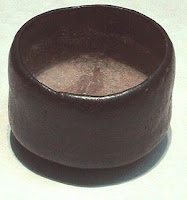The Thirteen tactics are the real nitty-gritty of martial tai chi chuan. Yet how often are they overlooked by tai chi writers and practitioners? The Thirteen Tactics are: Peng, Lu, Ji, An, Kao, Zhou, Tsai and Lie, plus the steps of centrally fixed, left, right,back and forwards. In short: you do stuff with your hands in conjunction with moving your legs. This may sound simple, but many of us tai chi people cannot move our arms
and our
legs together. We fix in one spot and flurry madly, or we dance about in a pseudo-boxing way. It is tempting to think of the Eight Forces (Peng, Lu etc.) as things done from a fixed-step position. They simply will not work in this way, unless against someone very small and weak. The interesting thing is that the "feet" part of the Thirteen Tactics can be done by anyone, straight away. We can all go forwards, left and right and so on. Maybe there is a snob thing going on here: "If
everyone can do it right away why bother practicing it?". Or maybe it's so plain and simple, it evades us, like not seeing the wood for the trees. Evasion, arguably the most important part of the martial repertoire, is all about
natural movement. There's not much dollar to be made from saying "you don't need to be taught it, you can do it already." Where the art of teaching appears is in designing scenarios and methods that will test and elicit this natural movement, rather than just having someone copy it in rote style. I think sometimes that the best we can do as teachers is show the students how to get out of their own way; the rest really is up to them. Thank the gods, maybe we can all take a well-earned rest...


